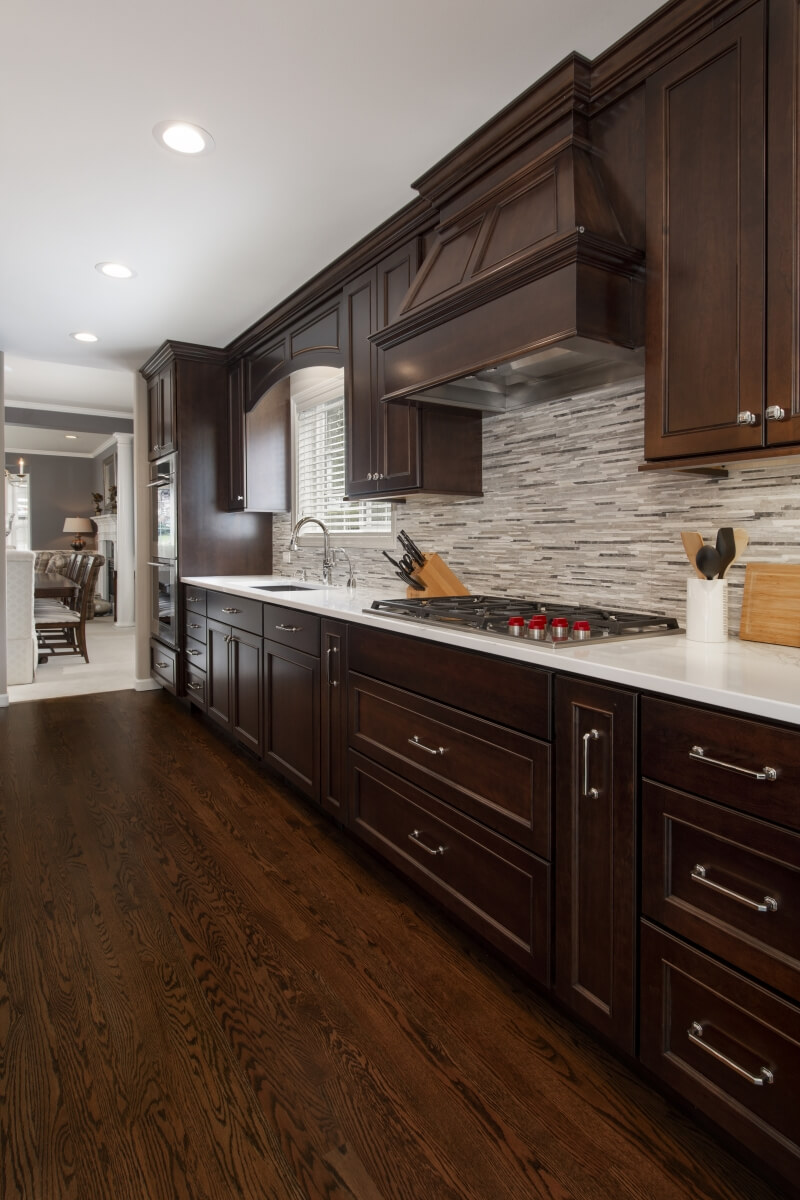The kitchen layout is the shape made by the arrangement of the countertop, major appliances (i.e. kitchen sink, range, and refrigerator), and storage areas. The layout and floor plan create the kitchen’s primary work triangle, which is the path that you make when moving from the refrigerator to the sink to the range when preparing a meal.
When designing your new kitchen layout and choosing the best cabinetry solutions for your home, one of the first considerations is the overall layout of the kitchen.
There are five fundamental layouts for most kitchens – Galley, L-Shaped, U-Shaped, G-Shaped, and Single Wall. Over the next few weeks, we will explore each of these different kitchen layout styles in more detail.
Today, we are going to take a closer look at the final kitchen layout option, the Single Wall Kitchen Design.
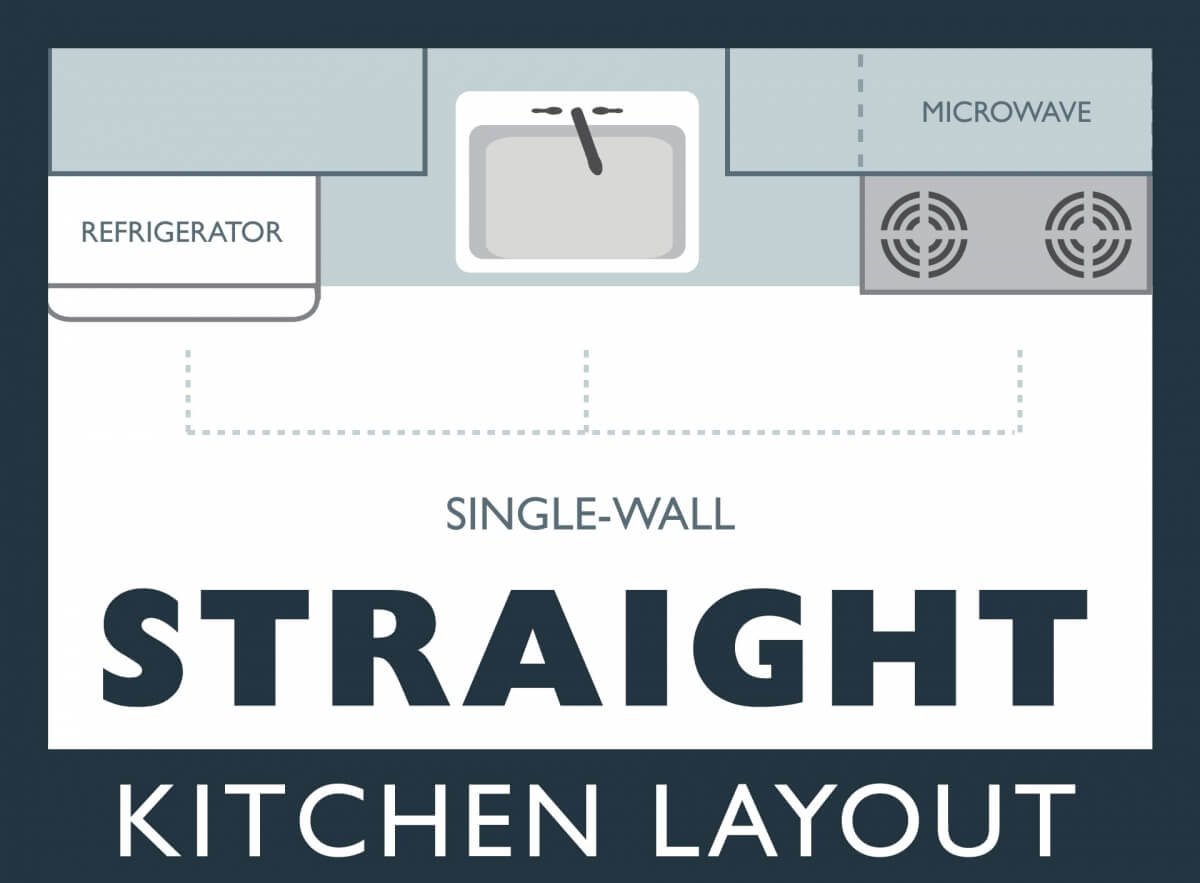
What is a Single Wall Kitchen Design?
A Single-Wall kitchen floor plan is ideal for smaller home footprints such as condominiums, apartments, lofts, or tiny homes that usually feature spaces with open-concept floor plans to the kitchen and adjacent areas. The work triangle in this kitchen layout is less like a triangle and more of an assembly work line with all the cabinetry, major appliances, and work zones all arrayed along one single wall. Due to all the kitchen components being compacted onto one single wall, this layout offers an uninterrupted countertop surface and efficiency for cooking, prepping, and cleaning after every meal.
If you are planning to design a Single-Wall kitchen into your home, below are a few tips and ideas to consider for your new kitchen:
-
Tailor your space – Plan for a minimum of 8’ of wall space or longer for a Single-Wall layout to ensure that you can fit all three primary points: Refrigerator, sink, range, and countertop surface within your design.
-
Consider the location of your kitchen sink – If the kitchen area has one, it is ideally best to place the sink under the window to take advantage of the scenic views and allow in the natural light. In addition, if possible, it is best to locate the sink in the center between the range and refrigerator to create the best functioning assembly line so that the sink is within easy reach during prepping and cooking meals.
-
Consider your workflow – Create and maintain countertop landing areas between the refrigerator and the sink and the sink and the range to allow for work areas to overlap and allow room for food and kitchen utensils to sit while prepping, cooking, and cleaning.
-
Consider the location of your refrigerator and tall cabinetry – To avoid interrupted countertop surface and space, place any tall appliances (refrigerator and ovens) opposite of each other and on the ends of the Single-Wall.
-
Maximize on your storage – When you only have one wall to work within your kitchen layout, get creative and think vertically with your storage. Consider maximizing your storage space by designing your cabinetry to go all the way up to the ceiling. Evening adding toe-kick drawers on all your base cabinets will give you some extra storage space for items that are shallow, such as cookie sheets and pizza pans.
-
Auxiliary Island or Table – If the space allows, adding an auxiliary island or dining table that is mobile can provide extra storage and a countertop surface to utilize when prepping meals. Keep in mind that a minimum of 36” of walkway space between all sides of the kitchen island or table and perimeter cabinetry walls should be maintained to ensure safety and functionality.
Inspiring Single-Wall Kitchen Designs
Below are a few examples of some lovely Single-Wall Kitchen Designs for inspiration and ideas:
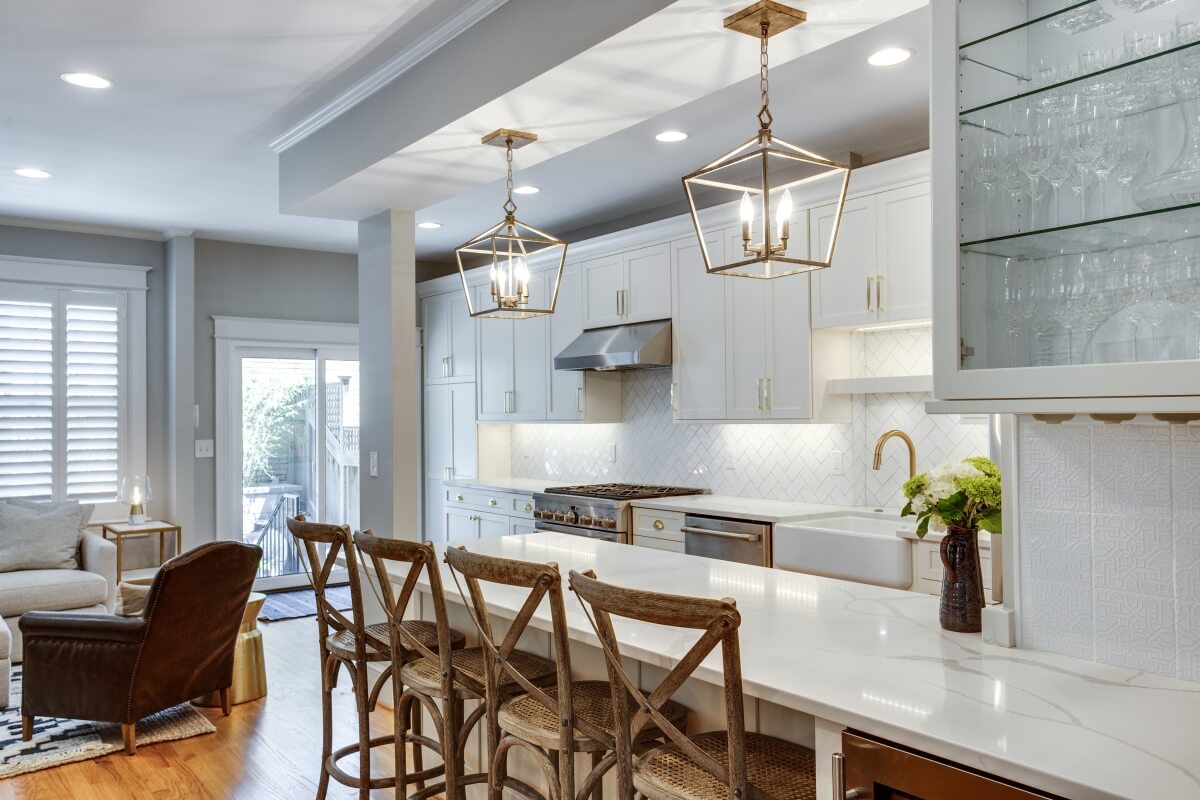
An example of a Single-Wall kitchen layout designed by Bath Plus Kitchen in Alexandria, Virginia.
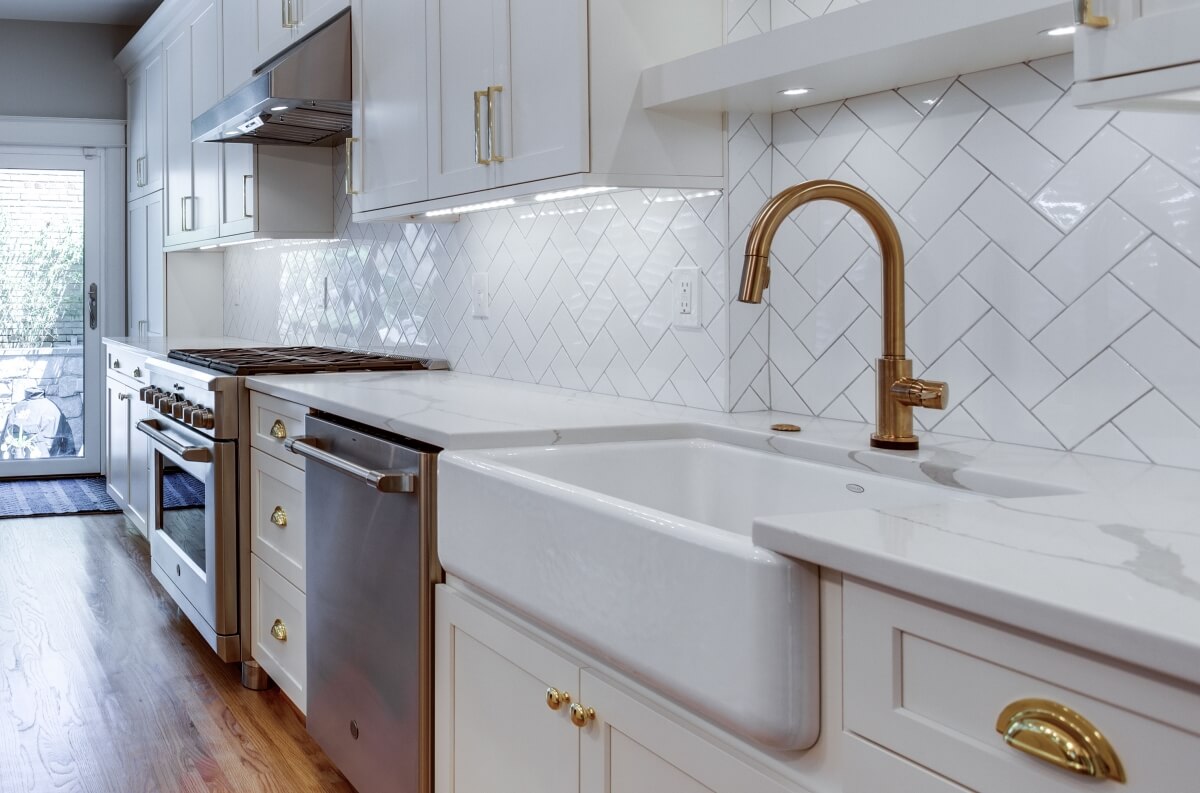
A close-up detail photo of the Single-Wall kitchen design by Bath Plus Kitchen in Alexandria, Virginia.
Dura Supreme design by Shannon Boyle, AKBD of DesignLoveSeattle, Seattle, Washington.
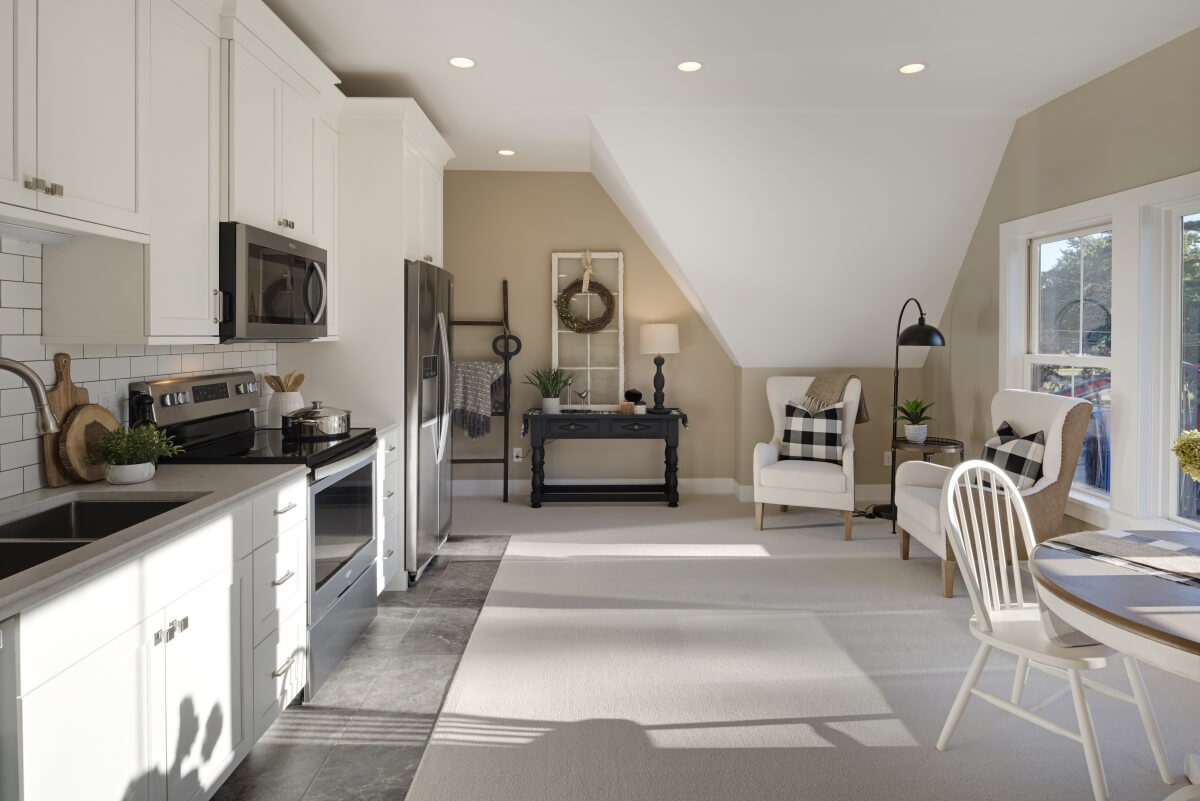
A quaint and cozy little home featuring a Single-Wall kitchen layout designed by Studio M Kitchen & Bath, Minnesota.
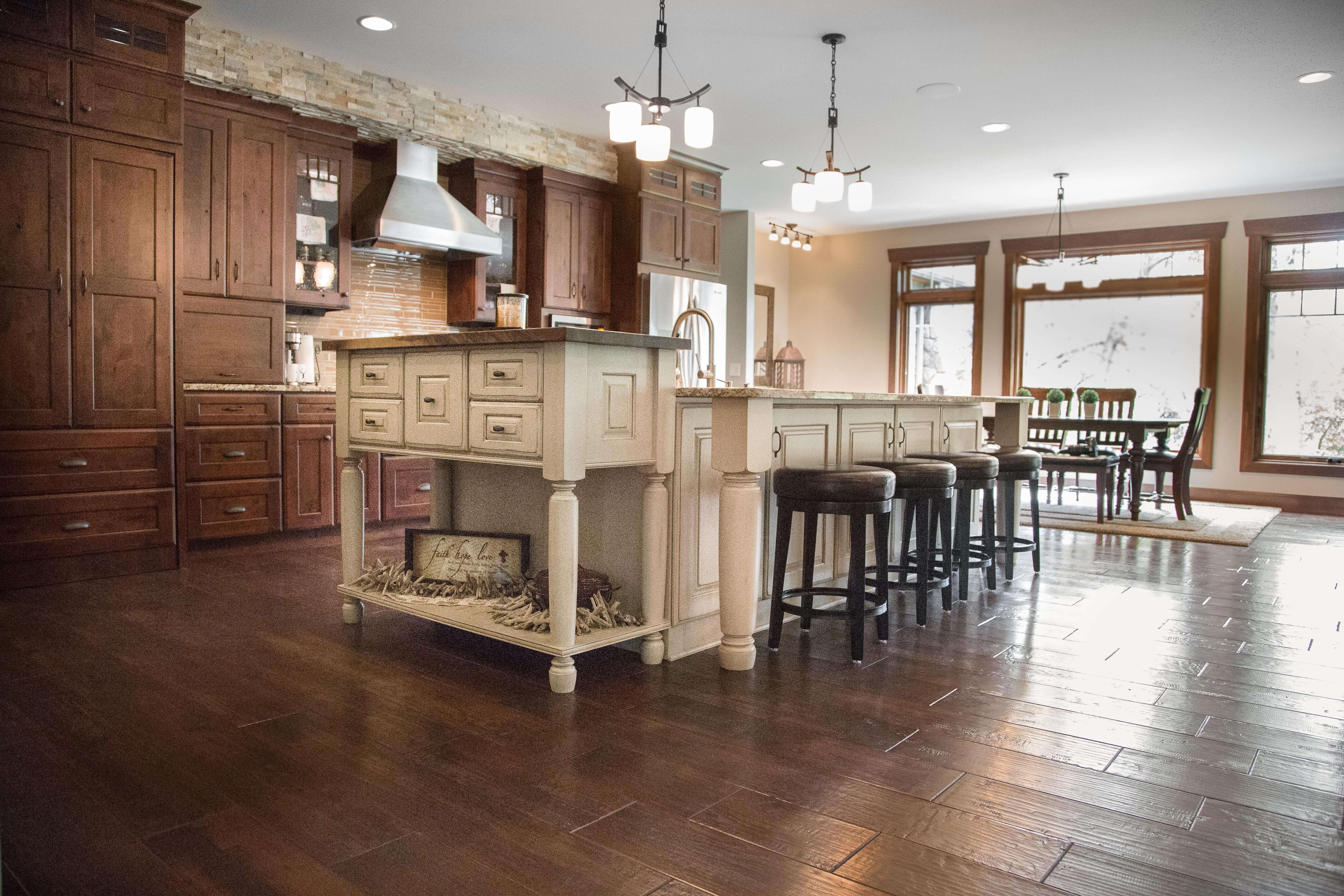
Kitchen design by Trisha Gaffney, AKBD of Avenue 52 Designs. The Dura Supreme Cabinets were supplied by Collaborative Interiors, Mercer Island, Washington.
To learn more about how to optimize your kitchen layout, contact your local Dura Supreme Showroom.
